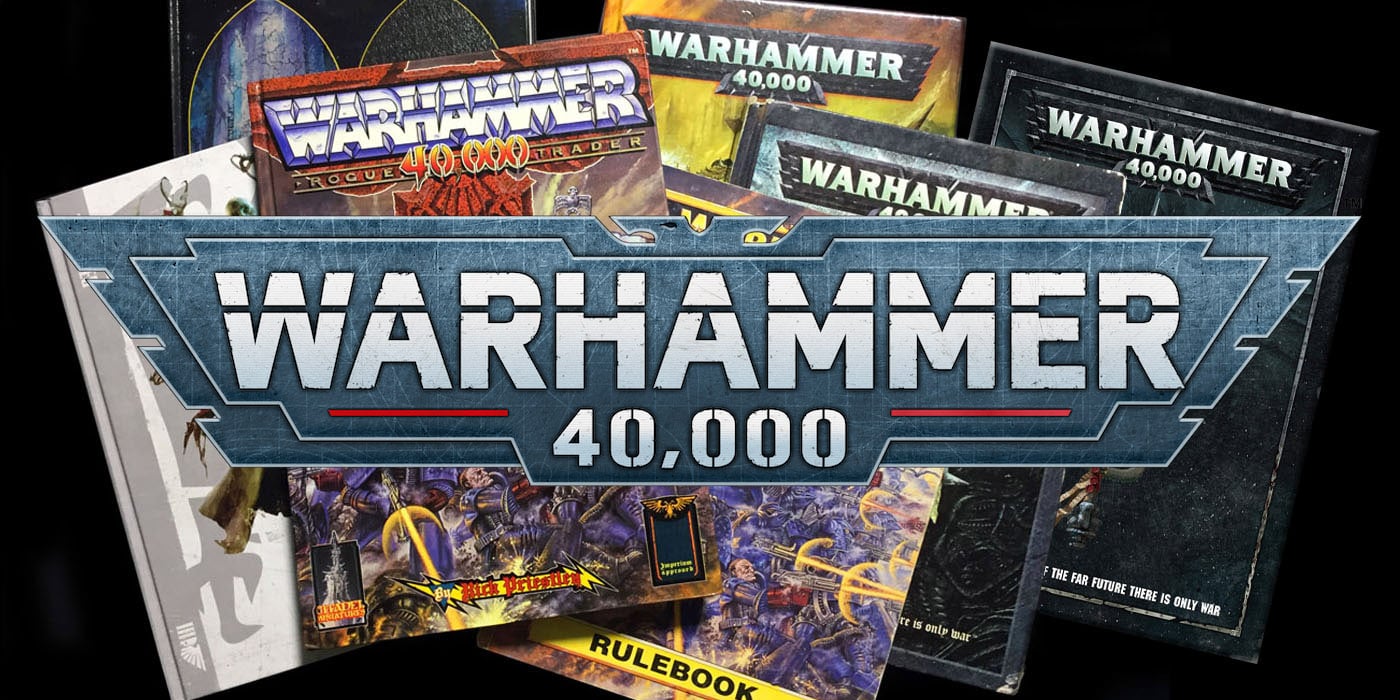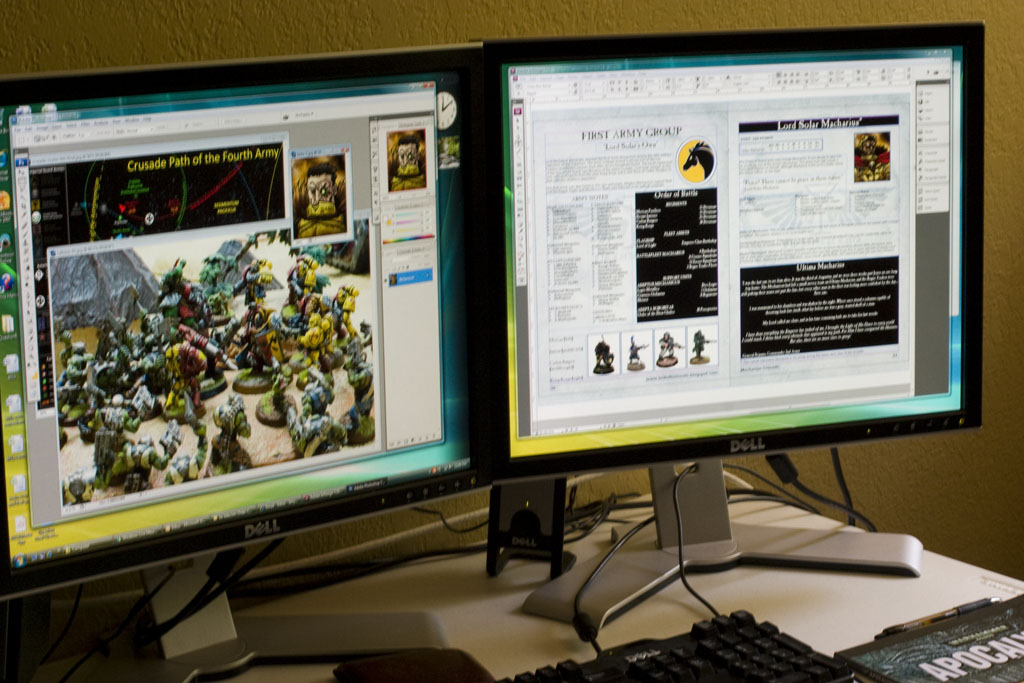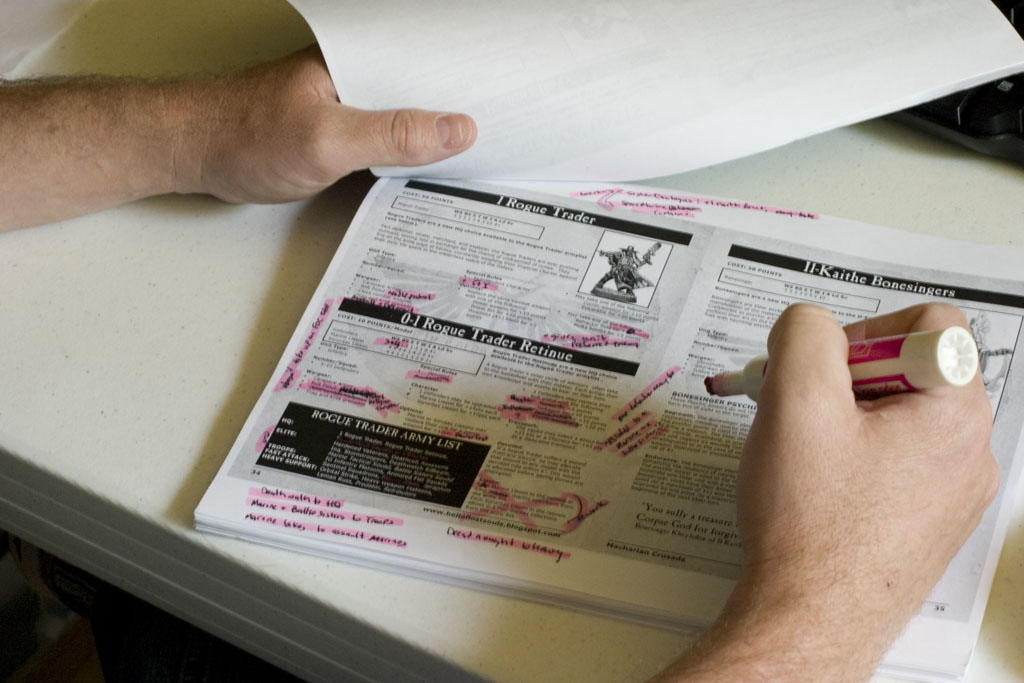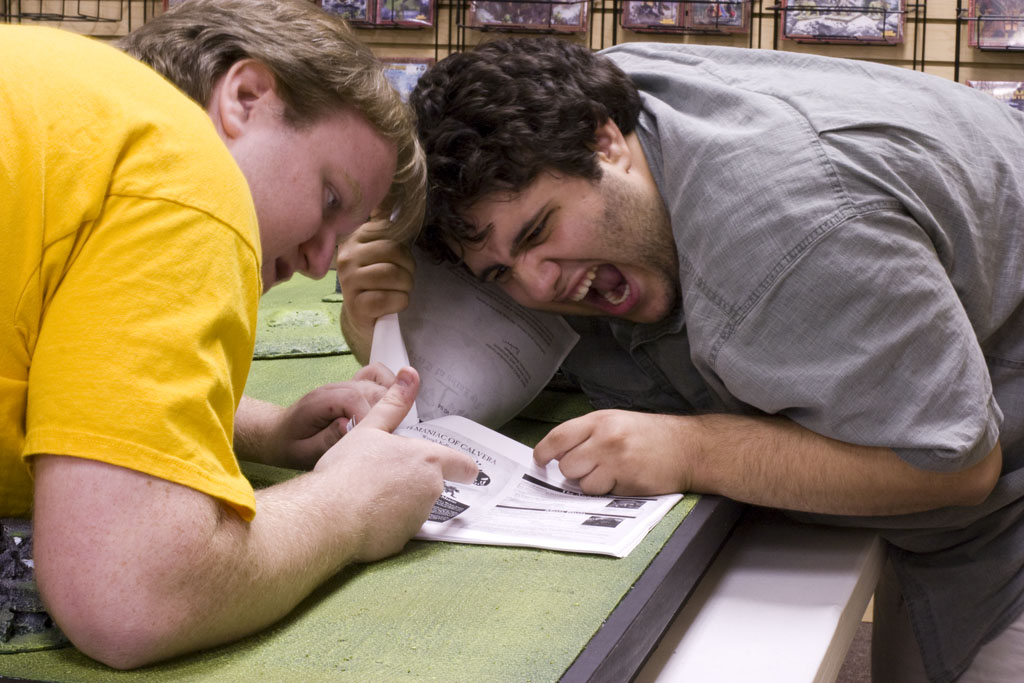TUTORIAL: Designing a Mini-dex


Today I have something a little different. We here at BoLS really enjoy working our little creative brains to churn out our little mini-dexes and campaign books for you guys. To this day, our number one mail request is for a brief rundown of how we make these. So hey, this is your lucky day. Here is a rundown of the process we use here at BoLS to produce a campaign book or minidex. I will be going over the basic steps, and using the recent Macharian Crusade book for examples. This one goes out to all the budding designers out there, enjoy and good luck!
Core Concept
The first thing you should decide on is what your publication’s goal and scope is. Are you looking for a quick mini-dex for a minor variant army, something for a handful of players to enjoy over a weekend or a massive multi-month campaign for dozens of players? Once you have your scale established, you should move onto the exact subject matter. Do you wish to include every army in the game, or focus on a subset? Do you want to cover a “historical event” which is described in the fiction, or invent your own? There is no right or wrong choice, but is it critical to get these thoughts down on paper as your guiding principles. Its always nice to have your destination laid out in black and white when you hit difficult design decisions in the future.
~For Macharian Crusade, we wanted to follow up on the heels of our Age of Heresy campaign book with something that in no way focused on marines. We wanted something Imperial-centric, historical, and involving a good amount of armies. After tossing around doing Damocles-Gulf, Age of Apostacy, First War of Armageddon, and Hivefleet Behemoth, we settled on the Macharian Crusade. We really got into the concept of a huge book focussing on the Imperial Guard. In the fluff they do 99% of the back-breaking fighting that keeps the Imperium intact but constantly get sidelined by the Astartes. Our book would be a direct attempt to showcase the true power of of the Imperium’s military; the lowly guardsmen and his lasgun.
Research
Now that you have a concept, the next step is research. Your goal here is to thoroughly research your topic. This is where you need to scour every GW book going back to Rogue Trader and White Dwarf 89. The internet is a huge research tool so use it well. With almost 20 years of 40k under their belts GW has provided thousands of pages of background information for you to mine. The goal here isn’t to slavishly copy every work of fluff but instead to build a framework for your creative efforts so your final product fits into the existing 40k universe like a puzzle-piece. The last thing you want to do is spend a lot of time and work only to have someone point out a glaring inconsistancy with the established fluff minutes after you release it.
~Macharian Crusade was a monumental research task. We pulled in fluff from ancient IG codices, several maps, chronologies from a variety of White Dwarfs, and myrid other locations. One of the most challenging aspects was the directly contradictory information that had been put out over the years and the evolving fluff that was occuring under our noses as 5th edition approached. In many respects the contradictory information ended up being a boon as it gave us flexibility in certain creative aspects.
Writing
Here is where a bit of the “special sauce” comes in. I can’t give you any specific instructions on how to attack this, but this is the main meat of your project. You are going to have to pull together your research material, and create something that meets your initial design goal. Whether you are working on fluff or rules, be true to your guiding vision and let the muse lead you where she will.
For fluff, feel free to draw inspiration from the real world to help guide your way. 40k’s fluff is heavily influenced by a myriad of sources from Golden Age sci-fi to the classics, and everything in between. If you find something that inspires, go with it.
For rules, look to the existing rules, old edition rules, and all the codices going back as far as you can access. You will need some basic background in game theory and design, and books on the subject are easily found. Remember always, that your creations are intended for a game; and thus for fun. You are ultimately creating an entertainment product. Always try to avoid the overly-complex, the cruelly one-sided, and the unbalanced.
~Macharian Crusade was directly influenced by the life of Alexander the Great. We threw ourselves into his biographies to try to better understand not only his conquests but the man himself. I borrowed heavily from the classics to give the fluff a hopefully antiquarian feel. Do a websearch for Sogdian Rock and see what you get 🙂 When it came to rules, we strove to add detail and depth to the existing IG codex and create a set of characters who were talented but still normal men. They were to inspire and lead through their knowledge and military cunning over brute martial power. Space Marines they were not.
Layout
Layout is your next task. You have your content completed and need to get it formatted in a nice easy to access format. You can use whatever computer tools you have access to. We currently use Adobe Creative Suite, but Age of Heresy was created entirely in Microsoft Word. Whatever you choose, strive for a nice clean layout with appropriate fonts that makes it easy for your audience to read, reference, and use for play. Always ask yourself: could you use this publication easily in the middle of a 40k game? Look to the 40k universe to guide you layouts, and by all means take a look at GW’s intellectual property page to find the list of no-nos to avoid.
~For Macharian Crusade, we wanted to go with a much more lavish visual layout after wrapping up Age of Heresy. The power of Adobe products allows striking layouts that we just couldn’t accomplish before. We followed the organization pattern of fluff, modelling, rules, ICs, Apocalypse, then finally campaign rules. To keep the book fresh, we made sure to break up any “dry” areas with regular visual fluff content such as the Capitol Imperialis pic, spaceship pics, maps and the like.
Editing
Ok, now comes the fun part. Your first draft is complete. Its time to hand it over to your other compatriots and start some internal discussions on your content. Bring out the highlighters and let your fellow designers rip up your baby. They will often see ommissions, awkwardly phrased rules, and just silly ideas you thought were great at 2:00AM. During this phase your goal is to simply fix any glaring issues and clean up your rules and ideas, while ensuring they still meet your inital project goals.
~For Macharian Crusade most initial work was done by myself, with mkerr coming in with his dreaded pink highlighter of doom after the fact. It is one of his life’s greatest pleasures to drop a manuscript in my lap that is literally covered with edits. While maddening at first, the sweeping debates that come up during this phase will keep all parties honest about your overall goals and ensure that the really hairbrained ideas get stomped out early. For example, the early drafts of the Merican Fusiliers required that you take so many mandatory doctrine upgrades that each trooper came out to well over 16pts apiece! What was I smoking?
Playtesting
Now your project is the best you can make it internally. Its time to bring forth the playtesters; those bastards 🙂 You’re ideal team will contain a mix of newcomers, grizzled old-timers, and tournament players. New players give great feedback on how easily understandable your project is. Grizzled old-timers give great comparitive analysis of your fluff versus the existing 40k universe and can provide insights into how your rules hold up compared to similar concepts they have seen over the years. Tournament players will tear your rules apart bit by bit, and give detailed and brutal feedback on what works, sucks, or is too powerful. Your job is herd all of these cats and convert all of their honest feedback into ever more balanced and improved release candidates. Eventually you will reach a place where everyone agrees that there are no more serious issues (you will of course never truly be done).
~For Macharian Crusade we relied heavily on the Austin 40k community. This large group (over 40+) are tireless testing savants, and our core of tournament ringers (you can see Abe and Brandon above) are merciless to the Fly Lords. We all spent several weeks glaring at each other and muttering about each other behind each others backs, but all for a good cause. In this phase an adversarial relationship will lead to a superior product and you always need to remember that folks fight the most for ideas they truly believe in. As one example, Masta-blasta went through at least 5 different versions before we really felt like we got him right. (in v 1.03)
Proofreading & Release
You are at the end. Have everyone look over the work looking only for typos, grammar, and incorrect rules. It is virtually impossible for this task to be done by the primary author and you really need a 3rd party to help you out. Once you have it all ready to go, export the doc as an Adobe PDF and let the world share in your invention. YOU DID IT! Now pack it away and start on the next one 🙂
~There you have it guys. Good luck and let us know if you any questions or comments. Happy writing and gaming!









